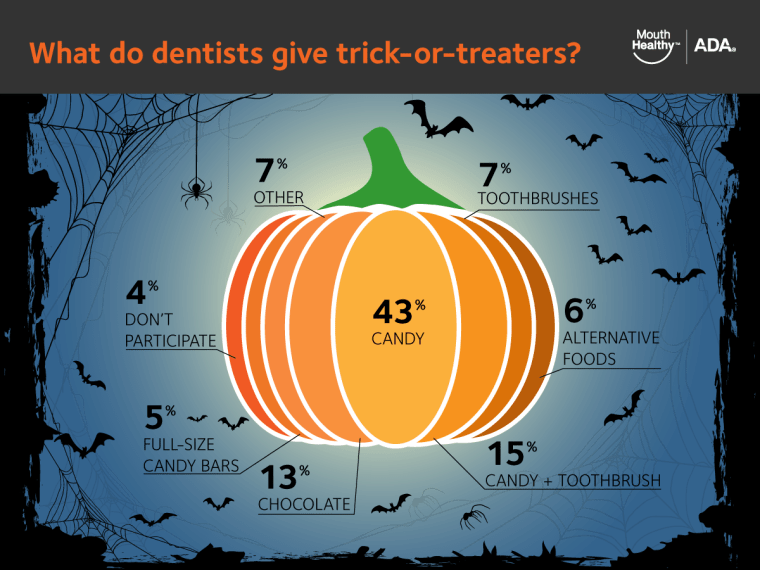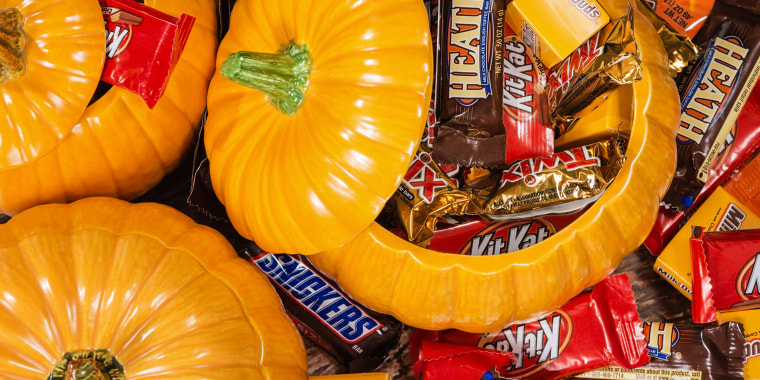What’s scarier than a ghostly, dark Halloween night? A mouth full of ghoulish teeth after a bacchanal of sweets, followed by a frightening visit to the dentist.
“I see what happens every day when kids eat a lot of candy,” Dr. Mary Hayes, a pediatric dentist in Chicago, told TODAY. “The process of decay peaks within 20 minutes of eating a sugary snack… (and) the results linger in there for hours afterwards.”
You know what's next: cavities and worse. Still, dentists don’t want to spoil all the fun. More than 76 percent give out some type of candy on All Hallows’ Eve, according to an American Dental Association survey of more than 200 members.

Some treats are “less worse” than others, said Hayes, who is also an ADA spokeswoman. Here’s what families need to know:
The candy dentists call 'your best bet':
There’s pretty much only one item on the list: Chocolate. (Yay!) The ADA says this favorite treat washes off teeth easier than other types of candy. Chocolate also has oils that actually decrease the activity of the bacteria that cause decay, Hayes added. Darker chocolate is better because there’s less sugar in it.
The candy dentists would not give out:
The list gets much longer in this category:
Hard candy: It’s pure sugar and you tend to keep it in your mouth for a longer period of time, the ADA notes. Plus, you can break your teeth if you try to crunch an undissolved piece.
Gummy candy: The same soft gel-like texture that makes it fun to eat also means it clings to your teeth.
Caramel: It’s also sticky and harder to remove.
Sour candy: Sour means it’s very acidic, Hayes said. “In acid, the bacteria can work even more efficiently,” she noted. “Acidic things that we eat change the pH of the mouth and… it’s a higher risk of decay.”
How to keep teeth healthy on Halloween (and every day):
Hayes tells kids it’s OK to have a piece of candy or chocolate or a treat, as long as they know they need to brush it off their teeth. That goes for adults, too. You’re giving the bacteria in your mouth a huge treat by eating sugar, which the bugs use to produce acid and make decay.
Here’s how to prevent those ghoulish teeth on Halloween night:
Drink some water: It’ll wash away the acid and push around any food debris that’s left in your mouth. Take a sip periodically to break up the candy frenzy.
Chew sugarless gum: The big thing that works in our favor against decay is saliva, Hayes said. When you chew gum, you produce saliva and that helps neutralize the acid in the mouth. Check with your pediatrician to see when your child is old enough to chew gum.
Bush and floss teeth thoroughly: Hayes recommended parents do a mouth inspection and actually look into their child’s mouth to see if there are bits of candy stuck on the teeth. She also advised them to directly supervise a child’s brushing, especially if he’s under 6, because many kids simply don’t know how to do it well.
